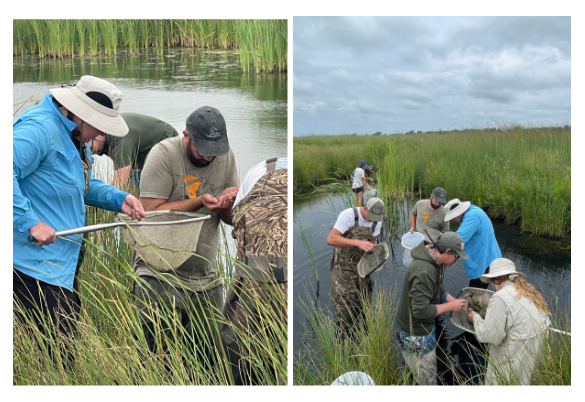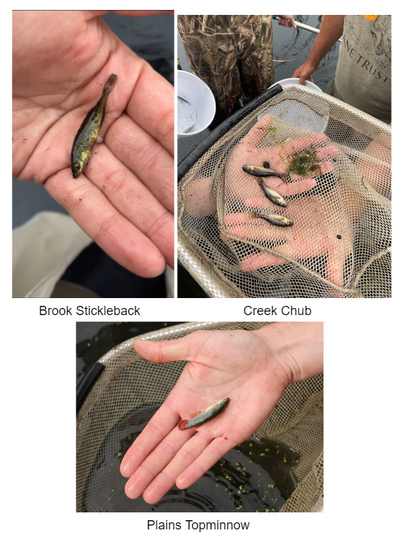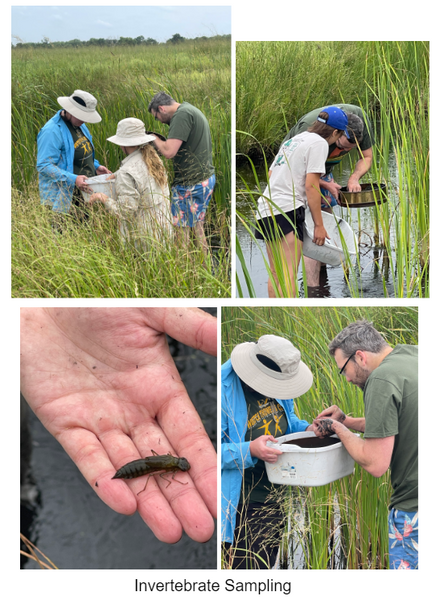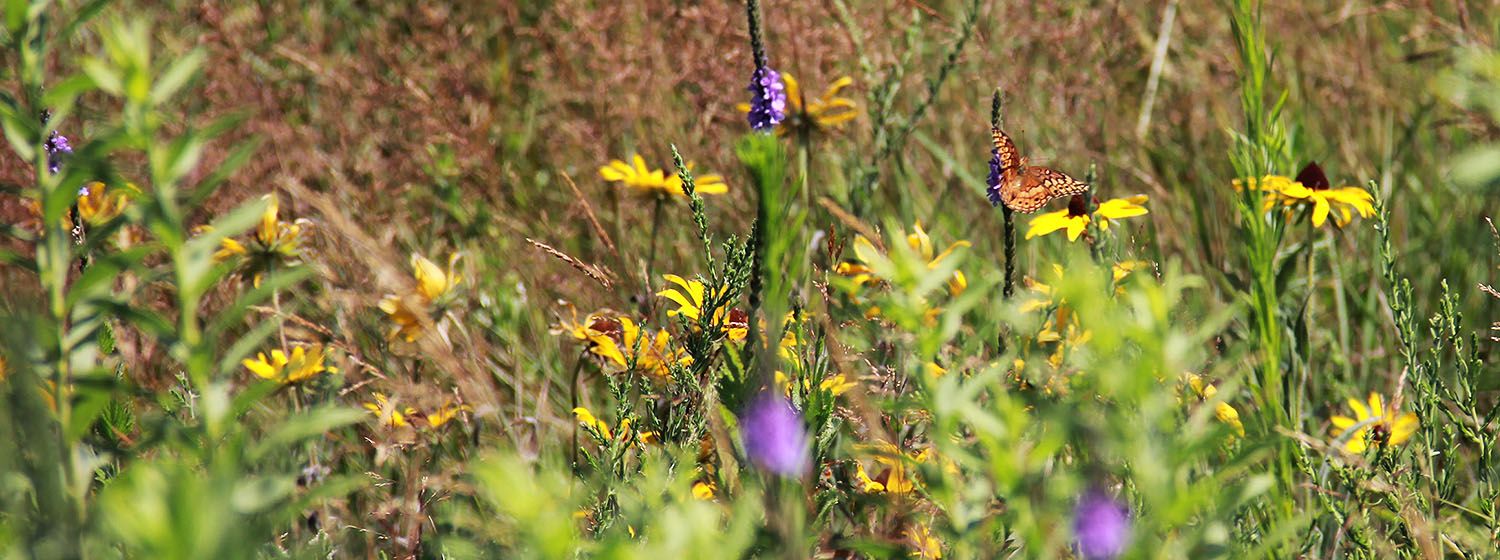When August rolls around it brings with it more surveys and fun! One of the surveys that starts in August is our fish seining and slough condition monitoring. Collecting data from the sloughs helps us to understand what is available for Whooping Cranes, Sandhill Cranes, and various other migratory waterbirds to forage on during migration. Additionally, surveying the sloughs allows us to see how different management practices, such as grazing, and weather conditions like droughts and floods may impact species present and slough conditions. These sloughs are important habitat for the Plains Topminnow (Fundulus sciadicus), which are Vulnerable in the state of Nebraska, and for the ecosystem as a slough wetland is connected to the groundwater table and the river. This connection helps filter water and can replenish groundwater supply in times greater water availability.
During our surveys we collect a variety of information including water metrics, vegetation, composition of the bottom of the slough (substrate), fish species present, and even the invertebrates. Anything else of importance such as the presence of a different invertebrate or tadpoles is noted as well.
On a survey day we sample a reach of each slough and would spend 2 days surveying at each slough. In each reach we would complete 6-8 runs to catch fish. We use a seine net that two people will drag just above the bottom of the slough as they move through the run toward the “scarers”. Scarers are people with smaller fishing nets that move towards the seine net to get the fish to swim into the net. Teamwork is key when trying to have a good run and catch as many fish as we can. There are a lot of moving parts, literally! The seine net people and the scarers will meet in the middle of the run. From there we get all of the fish we caught out of the seine net and into awaiting 5 gallon buckets which are easier for us to sort through. We dump the contents of the bucket into the smaller scarer nets and begin the identification and counting process. The fun part!!

To me it is always crazy how many fish we catch! We even catch some Plains leopard frog tadpoles (Lithobates blairi) and some American bullfrog tadpoles (Lithobates catesbeianus). They are the dark blobs we find among the fish. Unfortunately,the presence of American bullfrog tadpoles shows the reach of the invasive species in Nebraska. Over the four different surveys we found 6 different species of fish, one of them being a vulnerable species in the state of Nebraska, the Plains topminnow (Fundulus sciadicus). Some of the fish that were seen in our surveys were the Brassy Minnow (Hybognathus hankinsoni), Brook Stickleback (Culaea inconstans), the invasive Western Mosquitofish (Gambusia affinis), Plains Topminnow (Fundulus sciadicus), Green Sunfish (Lepomis cyanellus), and Creek Chub (Semotilus atromaculatus). The most common fish we caught was the Western Mosquitofish (Gambusia affinis), an invasive species. They were originally introduced because they were thought to selectively prey on mosquito larvae which would help with control of the mosquito population. Since their introduction it has been seen that they are opportunistic feeders competing with native species, such as the Plains topminnow, for food.

Did you know that both fish and invertebrates can tell us about the health of the sloughs that we monitor? Cool right! We use a metal sieve to sample for three specific groups of invertebrate larva (Odonata–dragonflies/damselflies, Ephemeroptera–mayflies, and Trichoptera–caddisflies). The person looking for invertebrates would dip the sieve into the substrate of the slough and then slowly wash away the sand/organic material to see what they were able to find. This is usually done three times per run section in varying locations. One group of invertebrates that we are looking for is Trichoptera. They are usually a great indicator of a healthy ecosystem since they are sensitive to pollution. Trichoptera were definitely harder to find during our surveys, but we did find them present in a couple different sections. There was a cheer that went up whenever we heard that Trichoptera was found.

Fishy Fridays was an awesome experience for me. I went from not knowing many of the fish we were catching to after three runs having a better idea of what species a fish was. By the end of our surveys I was able to identify fish species easier. I really enjoyed the surveys and everything that I was taught. I especially enjoyed whenever we caught tadpoles. They are so cute! Each week I could not wait till Friday rolled around so I could explore the sloughs.
Emma Richards
Lila O. Wilson Biological Monitoring Fellow
erichards@cranetrust.org
References
U.S. Fish & Wildlife Service (2017). Western Mosquitofish (Gambusia affinis) - Ecological Risk Screening Summary. https://www.fws.gov/sites/default/files/documents/Ecological-Risk-Screening-Summary-Western-Mosquitofish.pdf

